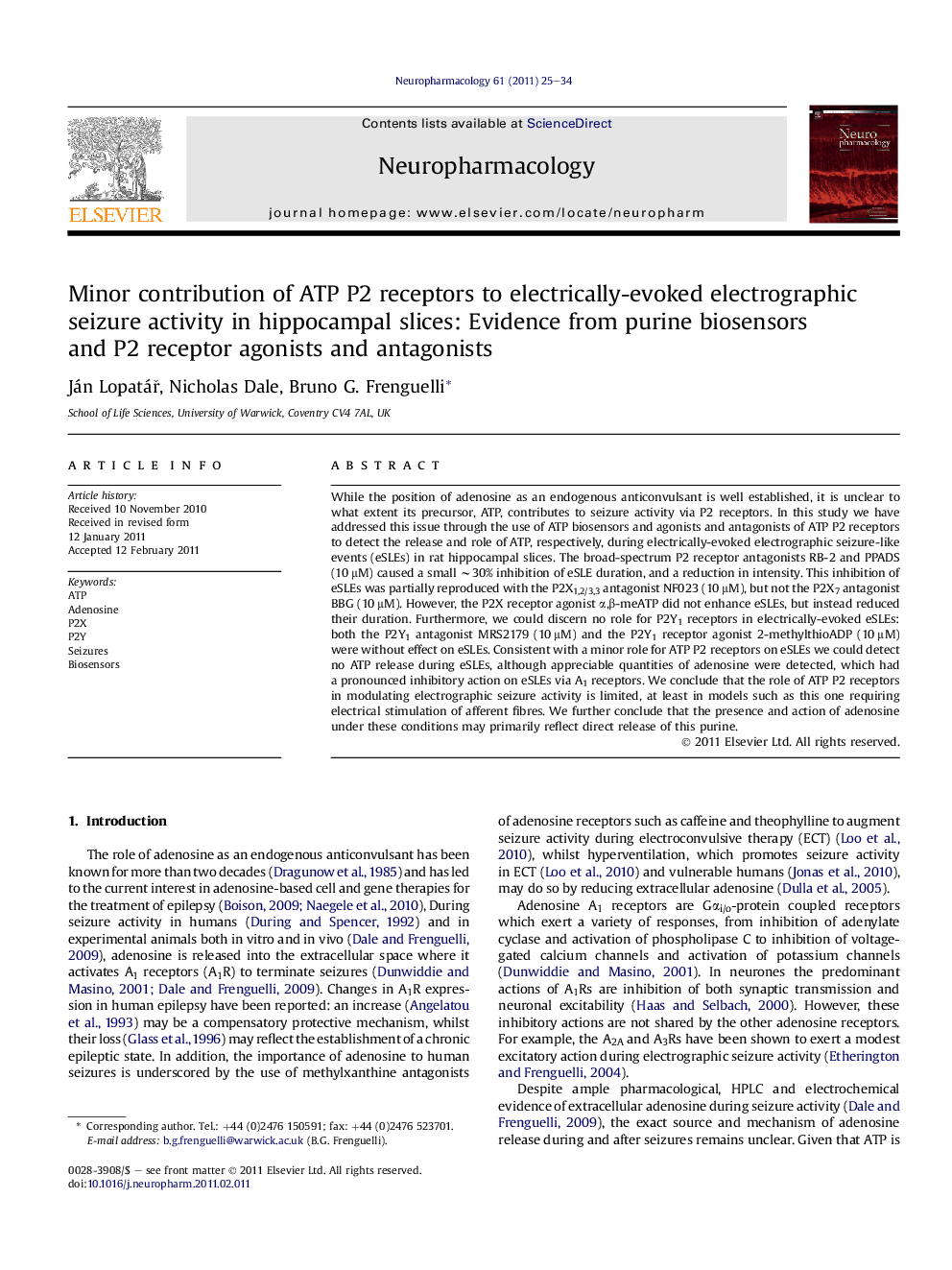| Article ID | Journal | Published Year | Pages | File Type |
|---|---|---|---|---|
| 2493627 | Neuropharmacology | 2011 | 10 Pages |
While the position of adenosine as an endogenous anticonvulsant is well established, it is unclear to what extent its precursor, ATP, contributes to seizure activity via P2 receptors. In this study we have addressed this issue through the use of ATP biosensors and agonists and antagonists of ATP P2 receptors to detect the release and role of ATP, respectively, during electrically-evoked electrographic seizure-like events (eSLEs) in rat hippocampal slices. The broad-spectrum P2 receptor antagonists RB-2 and PPADS (10 μM) caused a small ∼30% inhibition of eSLE duration, and a reduction in intensity. This inhibition of eSLEs was partially reproduced with the P2X1,2/3,3 antagonist NF023 (10 μM), but not the P2X7 antagonist BBG (10 μM). However, the P2X receptor agonist α,β-meATP did not enhance eSLEs, but instead reduced their duration. Furthermore, we could discern no role for P2Y1 receptors in electrically-evoked eSLEs: both the P2Y1 antagonist MRS2179 (10 μM) and the P2Y1 receptor agonist 2-methylthioADP (10 μM) were without effect on eSLEs. Consistent with a minor role for ATP P2 receptors on eSLEs we could detect no ATP release during eSLEs, although appreciable quantities of adenosine were detected, which had a pronounced inhibitory action on eSLEs via A1 receptors. We conclude that the role of ATP P2 receptors in modulating electrographic seizure activity is limited, at least in models such as this one requiring electrical stimulation of afferent fibres. We further conclude that the presence and action of adenosine under these conditions may primarily reflect direct release of this purine.
► We investigated the release and role of ATP during electrographic seizures in hippocampal slices. ► We observed a small contribution of P2 receptors to promote seizure activity. ► This is dwarfed by the profound inhibitory actions of adenosine via A1 receptors. ► Using biosensors we detected adenosine but no ATP release during seizures. ► Adenosine may be primarily released directly during seizure activity.
